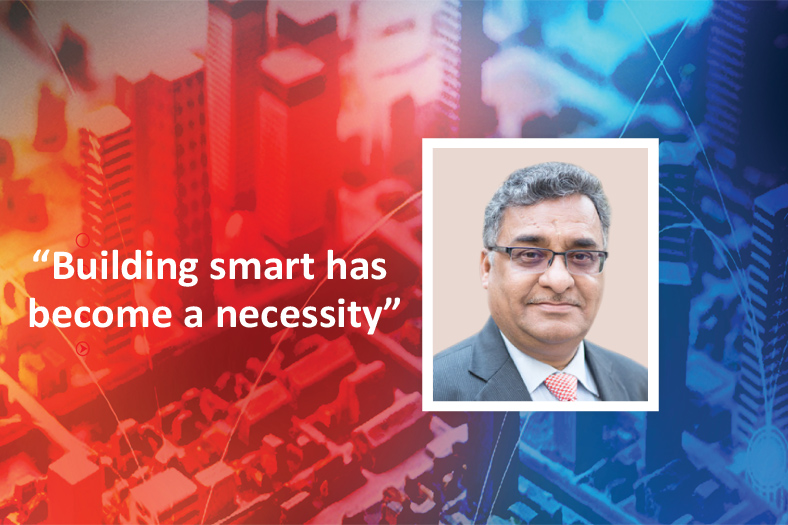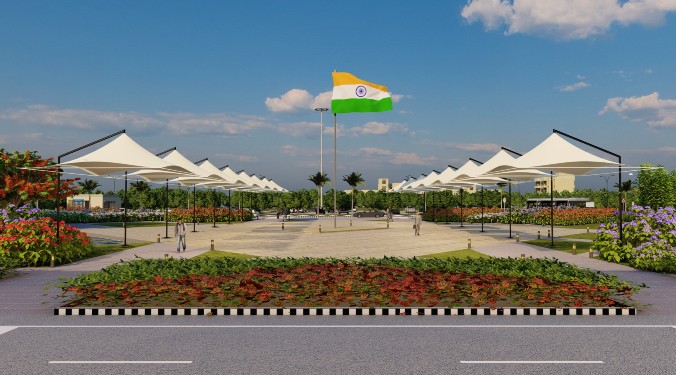
A well-designed building along the philosophy of green building design can be constructed at no or minor incremental cost.
Dr. Sanjay Seth, Senior Director, Sustainable Habitat Division, The Energy and Resources Institute (TERI)
Energy efficiency is one of the important components of building design. What are the parameters to be considered for sustainable building design?
Sustainable building design or green building design is a design philosophy which focuses on increasing the efficiency of resource use in buildings while minimising the impact of building environment and health and well-being of its occupant throughout the lifecycle of building.
Energy efficiency plays a major role in sustainable building design, however there are other important aspects such as water use, waste generation, waste management, indoor air quality, thermal and visual comfort etc, which are considered while designing a sustainable building. The sustainable design philosophy optimises all these parameters and provides minimum resource use with maximising the occupant comfort and productivity, thus reducing the overall impact on environment.
One common myth with sustainable buildings or green buildings is that they are expensive with respect to a conventional building. It has been proven many times that a well-designed building along the philosophy of green building design can be constructed at no or minor incremental cost and the reduction in operating cost of the building outweighs this minor incremental cost.
Renewable sources of energy play an important role in ensuring sustainability. How can one channel it in order to build sustainably?
To channel the renewable energy into mainstream application a holistic ecosystem needs to be created which is supported by enabling policy environment, market readiness, and favourable demand – supply chain and acceptance of technology by end user.
Currently in India we observe a positive drive towards solar energy application where government initiatives and programs have triggered the faster adoption of the solar energy systems. This has lead to creation of a self-sustainable ecosystem where solar energy has become an attractive option not because of the environmental obligation but because of its economic viability and improved reliability.
This model can be easily translated to other renewable energy sources; we have already witnessed the success of wind energy implementation where the government policies and programs led to wider implementation of wind energy projects in India.
Green buildings have necessitated the use of sustainable building materials. What are the benefits of its use?
Identifying the impacts and benefits of housing production at scale on our environment, our economy, and our communities to provide a method for the selection of the most optimal building materials and technologies, is no easy task. In addition, switching to more energy efficient construction technologies, will contribute towards further reducing carbon dioxide emissions per unit of value added; a process which has already seen a 14 per cent reduction between 2000 and 2013. The sustainable building materials and construction technologies would enable development of sustainable, affordable, and resilient buildings in mainstreaming sustainable housing for all.
What is the scope of green building in the context of developing smart cities?
Cities are centric to the growth for the economy of every nation. Nearly 31 per cent of India’s current population resides in urban areas and contributes 63 per cent of India’s GDP (Census 2011). With increasing urbanisation, urban areas are expected to house 40 per cent of India’s population and contribute 75 per cent of India’s GDP by 2030. To answer the needs of the individuals and building cities responding to the needs of the population, the Government of India launched the Smart City Mission in 2015. Since about two-third of the infrastructure requirement to address the needs of the population is yet to be built in the country by 2030, it becomes important to intelligently shape the buildings to reduce the energy loads and demands. Therefore building smart, energy and resource efficient green buildings becomes the necessity in the context of smart cities.
Green buildings use less energy, water, create less waste, and are healthier to live, work, or go to school in than standard buildings. Green buildings incorporate techniques that use resources more efficiently during the entire building cycle—construction, renovation, operation, maintenance, and demolition—than builders of conventional structures. With new technologies, constantly being developed to complement current practices in creating greener structures, the benefits of green building can range from environmental to economic to social. Green construction methods when integrated while design and construction provide most significant benefits.
Cookie Consent
We use cookies to personalize your experience. By continuing to visit this website you agree to our Terms & Conditions, Privacy Policy and Cookie Policy.









